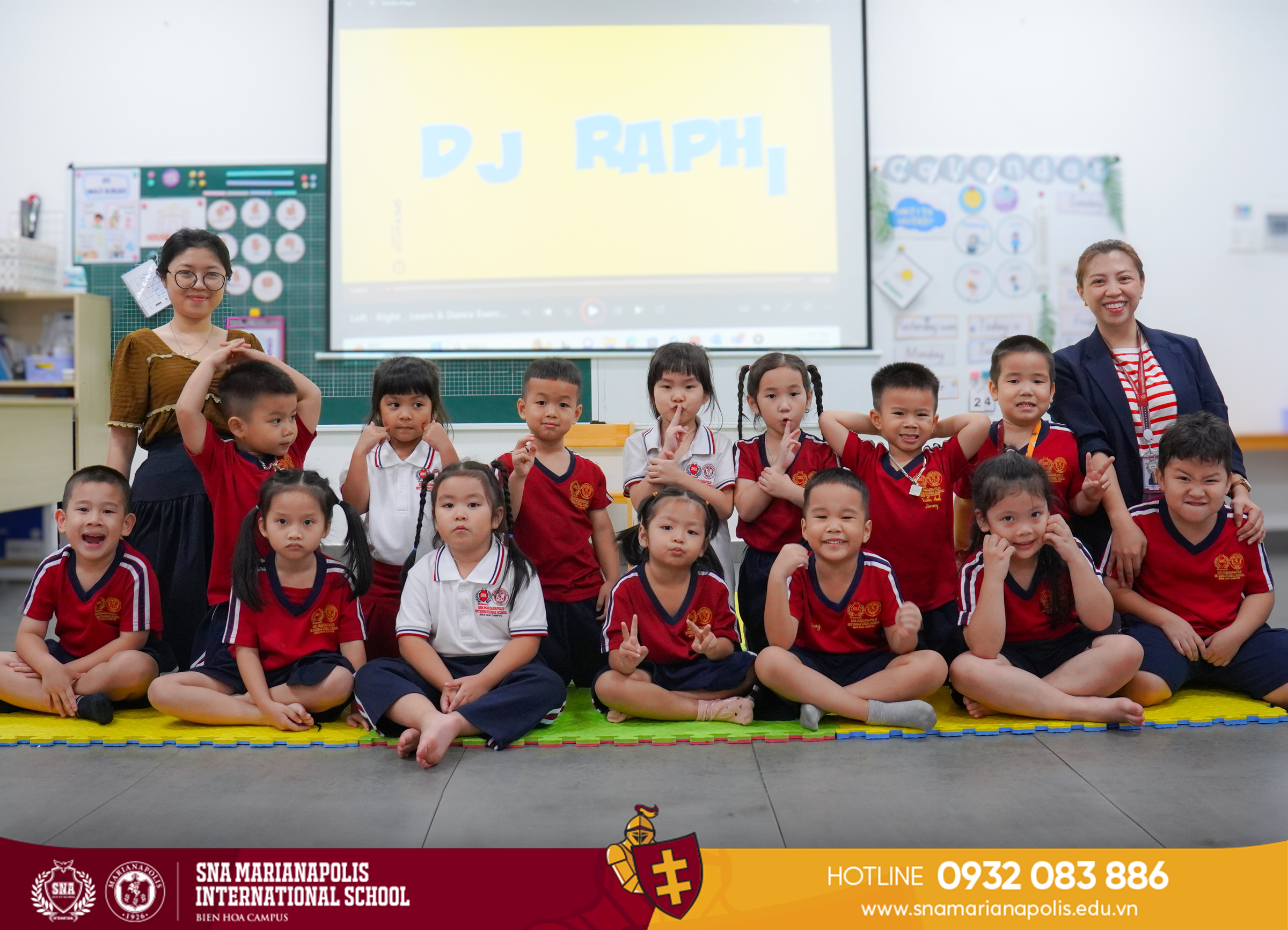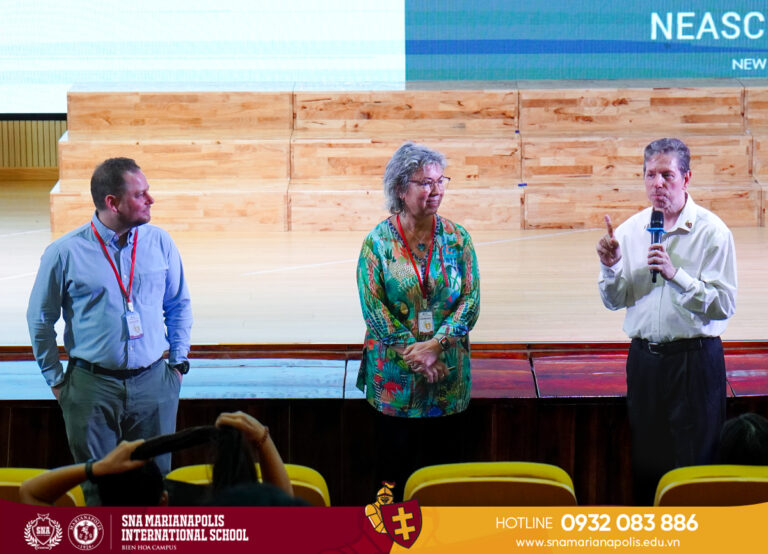TEACHER SPOTLIGHT | MS. SHARON MONTILLA
Ms. Sharon Montilla has been a teacher beloved by Preschool students at SNA Marianapolis International School for years. During her 17 years of being an educator, she has worked in the Philippines, Indonesia, and Vietnam. As a lifelong learner, Ms. Sharon just embarked on her journey as a Master’s candidate in Early Childhood Education.
Teaching is already a demanding career on its own, let alone teaching young children – a path that not plenty of people are willing to tread. For Ms. Sharon, early childhood education came as a true calling during her internship in university, when she realized and embraced the fulfillment of the task.
The Critical Learning Period

“Teaching in itself is already a profession that transforms lives,” she shares. However, as an early childhood teacher, she holds the key to unlock students’ future success. “My inclination towards this teaching path stems from the idea that the first 5 years of a child’s life is considered as critical period.” Research in education has long established that the early years of a child’s life is the prime time for substantial brain growth, specifically the formation of neural pathways responsible for social, emotional, and intellectual development. As such, healthy academic stimulations during these years undoubtedly set students up for upcoming academic rigors at schools, challenges in the workplace, and success in society as a whole. [1]

The Makings of an Outstanding Preschool Teacher
“Having the opportunity to play a crucial role in a person’s critical period was something that challenged me and inspired me to specialize in teaching younger children. I wanted to be able to help nurture younger children and create a holistic environment for them to develop a love for learning.” This personal mission and vision alone already show Ms. Sharon has the makings of an oustanding Preschool teacher. However, there are other qualities that make her a special one.
Ms. Sharon acknowledges her effective interpersonal communication and patience when it comes to children, which has come in handy in so many situations. “I am also a child at heart and can make up games in a heartbeat which are very useful in creating lesson activities or brain breaks to help students stay engaged.”


Play-Based Learning
On the topic of student’s engagement and learning through play, Ms. Sharon points out there’s a thin line that separates playing and learning in early childhood education. “Play after all is the best method of learning for this age group.”[2] That is why Ms. Sharon, like many other Elementary School teachers at SNA Marianapolis, often integrates play and learning in their curriculum. For Preschool students in particular, they get a fair share of in-class play-based learning while also getting outdoor plays on a daily basis.

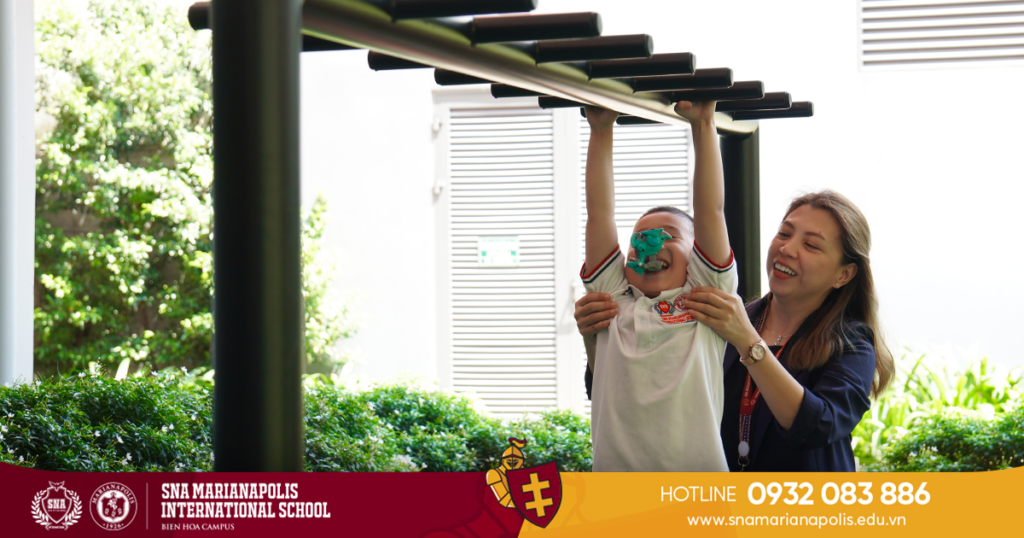
The Preschool classroom, like any other at SNA Marianapolis, integrates multiple spaces to adopt play-based learning and cater to students’ different needs. The class has centers for core subjects – Math Center, Science Center, Reading Corner for English Literacy, Inquiry Corner, and the Circle Time/Gathering Area in the middle of the classroom.
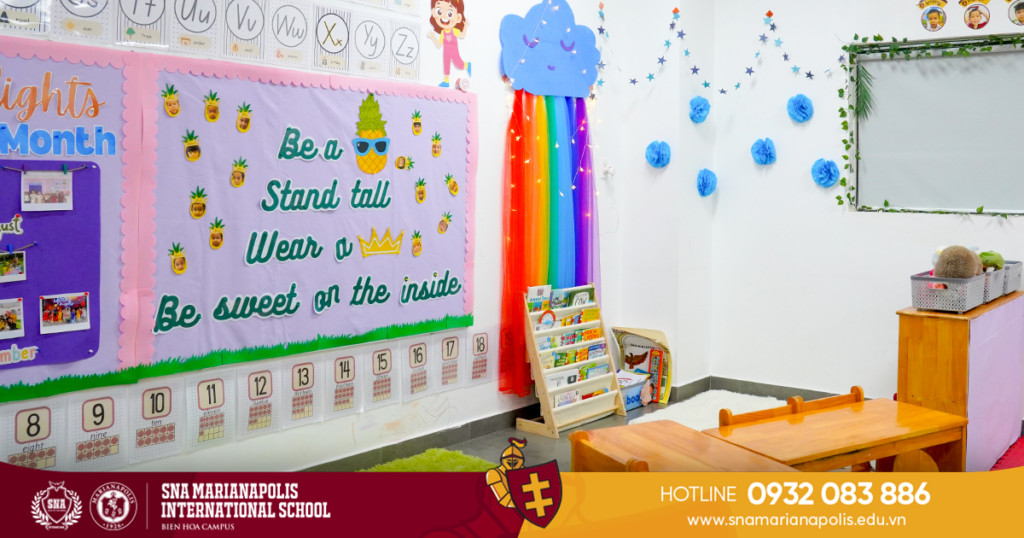
Inspired by the Reggio Emilia classroom setup, these corners become space for students to create and explore and ensure a holistic learning environment. In each center, there are materials that they can play with and, at the same time, learn. Ms. Sharon admits, “To the outsiders, it may look like a simple child’s play but when you look deeper, each area involves toys and activities that stimulate different cognitive skills.”
In the Science area for example, the children play with animals. Here they are free to explore the toys and in the process, they identify animals and sort them into land or marine animals. In the Math area, the play can look like children just stacking blocks, but they are learning to compare the height of each tower block, practice counting, and sometimes experiment different ways to effectively create a taller tower without the blocks falling. Besides picking up cognitive skills, students get a chance to develop their socio-emotional wellbeing as they learn the concept of sharing, working in a team, and so much more all while playing in the centers.
The two highlights in Ms. Sharon’s classroom are the Reading Corner and the Inquiry Corner. The purpose of the Reading Corner is to foster students’ passion for reading, literacy awareness, and socio-emotional skills. As an educator, Ms. Sharon believes in the importance of encouraging children to love books even before they begin learning to read. This cultivates in them an internal drive to learn to read instead of being forced to. They also learn to take care of books and have a sense of ownership by practicing putting back the books in the bookshelf, using the books properly, and caring for the books.
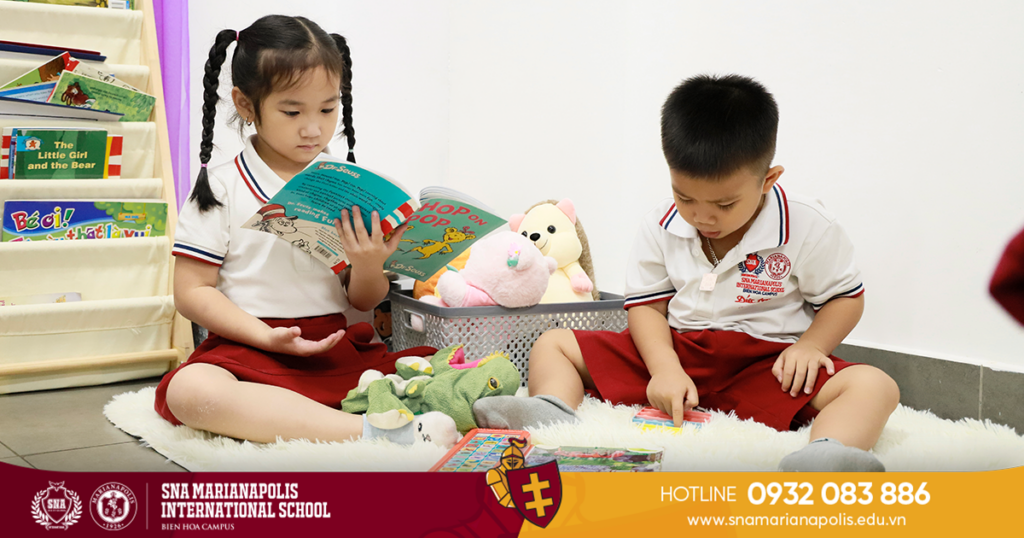
The Inquiry Corner, on the other hand, is the space for children to highlight their work. It is divided into three areas which are – “I See,” “I Think,” and “I Wonder.” The “I See” space is where they put the lessons they have learned such as the letter of the week. The “I Think” corner displays the application of what they have learned such as objects starting with the letter A. The “I Wonder” area is a free space for children to think deeper. Here they draw objects they think are connected to the lessons they have learned or things they want to learn about. This corner contributes to students’ critical thinking skills.
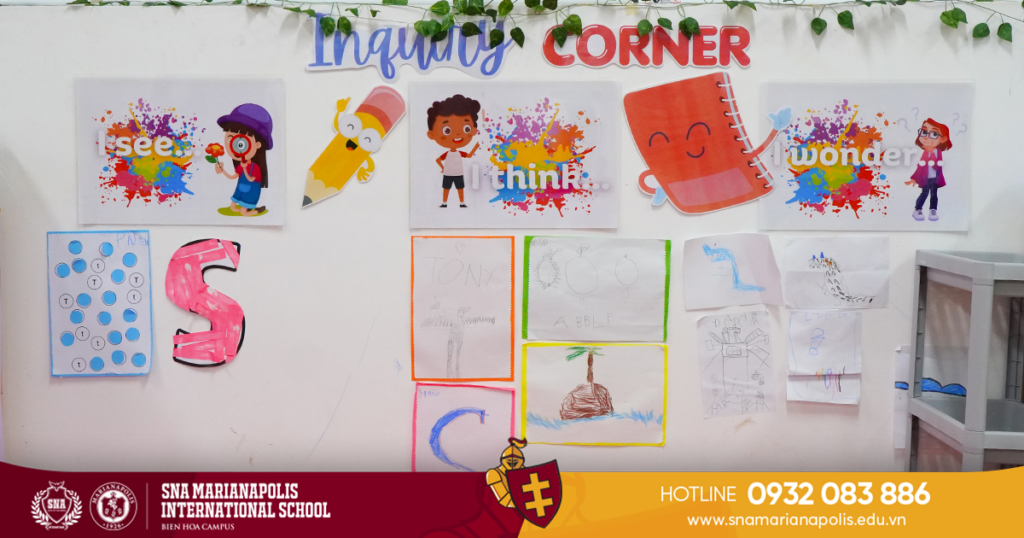
Fostering Character Building
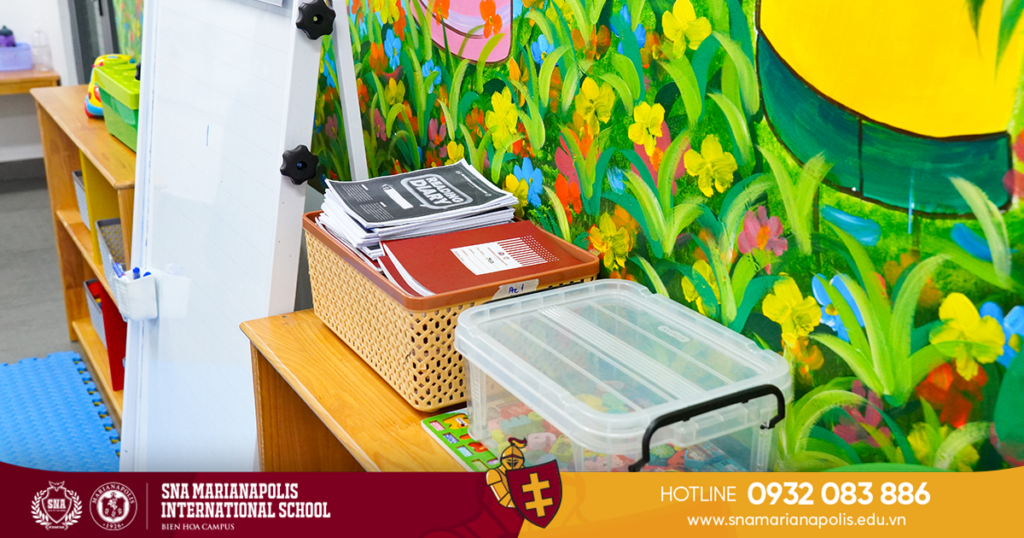
With that said, teaching Preschool is not always fun and games. There are also tough moments as in any other grade levels. To Ms. Sharon, the major challenge lies in addressing all the developmental needs of each student. What sets Preschool apart from other grade levels is that “their socio-emotional skills are just beginning to develop,” which requires Ms. Sharon to embed character building in classroom routines over the years she has taught. “This would include learning to be independent by practicing simple tasks such as knowing where to get the classroom supplies and tidying up on their own” – she says, “The children are also given ample activities to develop self-confidence through leading in singing songs for the Closing Circle time.” Last but not least, after building students’ characteristics, she ensures the classroom is a safe learning environment for the students to embrace who they truly have become.

Building Accountability and Ownership through Discipline Making
Character building and classroom routines also help Ms. Sharon’s students define and practice discipline within the classroom. Just like the significance of academic stimulation during students’ early years, Ms. Sharon stresses the utmost importance of discipline in this period as it is “when they begin to understand rules and consequences of their actions.” What’s untraditional in her disciplinary approach is involving students, even at that young age, in various classroom decisions such as rule making and in-class or outside activities selection. Such an involvement, according to Ms. Sharon, gives them a sense of accountability and ownership. She finds this to be more effective instead of imposing her own set of rules without giving her students some voice.
The Colleague that Shares the Burden

Ms. Kadie, the Kindergarten Teaching Assistant of three years SNA Marianapolis, is the well-matched partner for Ms. Sharon in her day-to-day class management. To Ms. Sharon, who is already experienced in handling young students, the task would be substaintially relieved by the aid of a TA. Working as a strong team, Ms. Sharon and Ms. Kadie strive to distribute the tasks between them. For example, during lesson time, Ms. Kadie is the one to help manage classroom behaviour to ensure that class goes on smoothly. “Assisting with line-ups and teaching students one-on-one are just some of the things that are made easy with the help of the TA,” Ms. Sharon shares on the luck of working alongside hers.
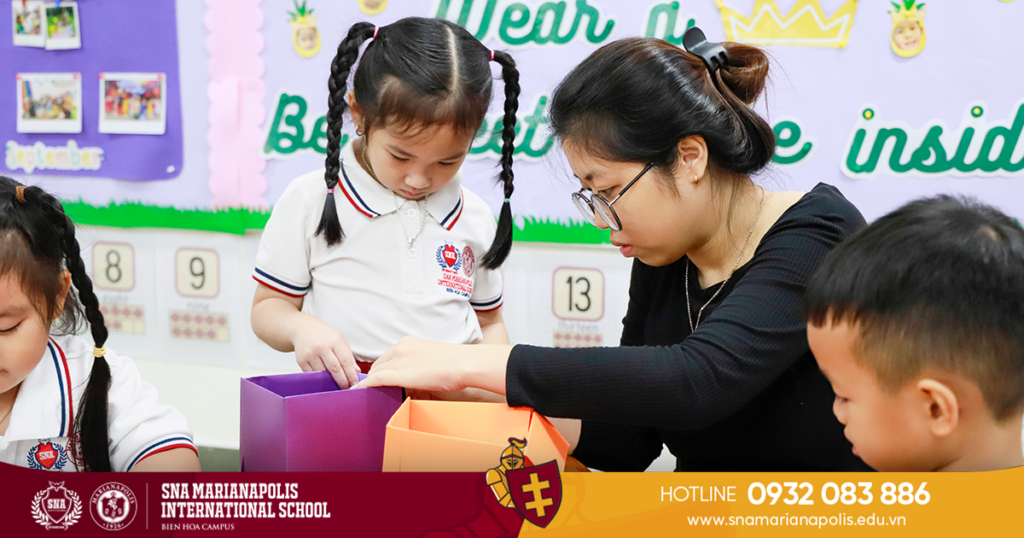
At the end of the day, one thing that Ms. Sharon takes the most pride in is her Preschoolers’ consensus in their love for learning. Every day is a breeze because the students are excited to learn and respond well. Getting them engaged is never a problem to Ms. Sharon. This current batch of students is also highly verbal, and they enjoy the challenge of being able to use their communication skills. Somehow, the task of teaching Preschool becomes less daunting and more rewarding because of the students.
References:
[1] Benefits of early childhood education by Fung Lan Yong, Doctor of Philosophy at Jesselton University College (2022)
The Sooner The Better: Early Childhood Education, A Key To Life-Long Success by Thomas Ehrlich and Ernestine Fu (2015)
Benefits of Early Childhood Education – published in 2012 on Resilienteducator.com
[2] Learning Through Play at School – A Framework for Policy and Practice by Parker R, Thomsen BS and Berry A (2022) on www.frontiersin.org
For more information about the teacher and curriculum, please kindly contact our Admissions via Hotline at 0932 083 886 or fill out the form below:


